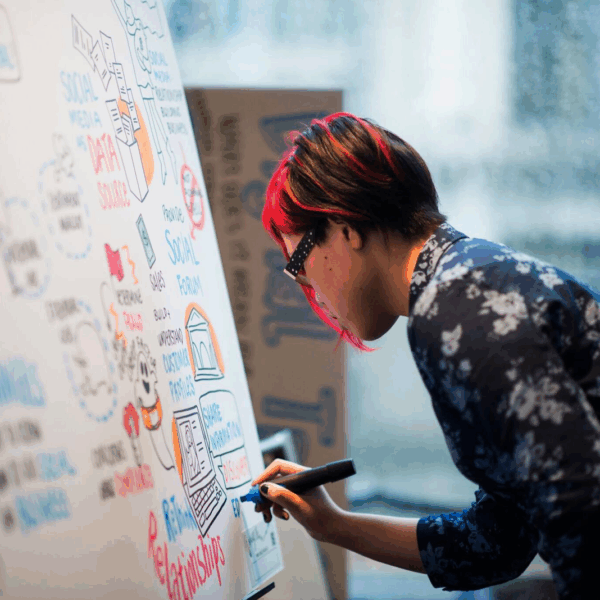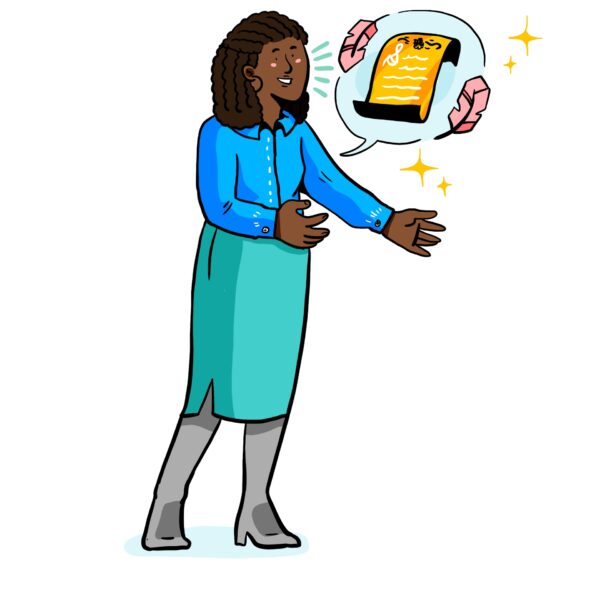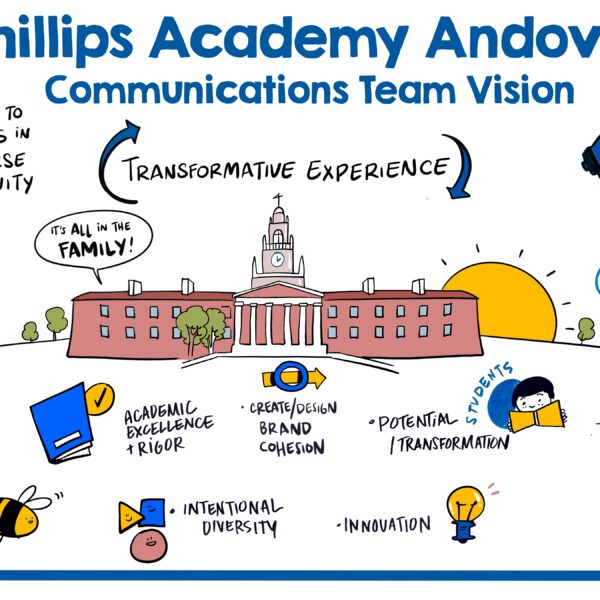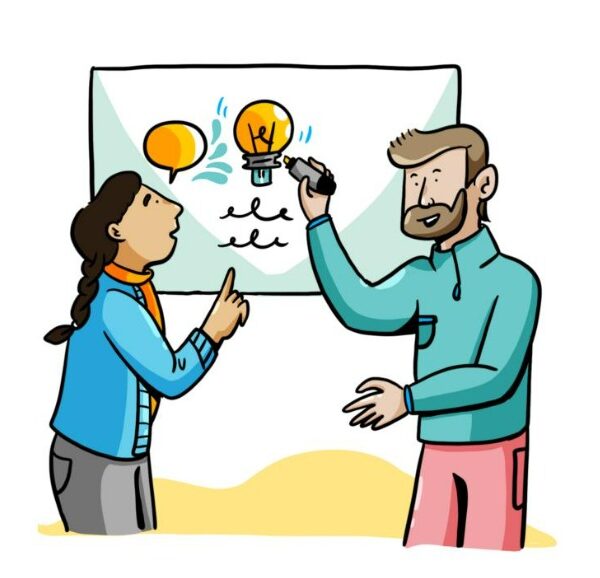A lot has changed this year. Wait, no, that’s an understatement. Everything has changed this year. School, birthdays, transit, travel, dining, and of course business. One thing that hasn’t changed? Meetings are hard. That’s why you need a virtual facilitator.
To facilitate means literally “to make a process easy or easier.”
For the last ten years, ImageThink has supported clients across a wide swath of industries and countries, making product launches, culture shifts, and initiatives easier. In every instance, a clear goal, strong agenda, and empowered graphic facilitator can be the difference between success and failure.
Below, we’ve outlined seven reasons a meeting facilitator is crucial, especially now, in the era of virtual meetings and virtual workshops. Give it a read, then give us a call.
A Virtual Facilitator is Someone to Ask the Right (Tough) Questions
Whether it’s a product launch, a culture transformation, organizational restructure, or new service launch, the number one way to guarantee stale thinking is by asking the wrong questions. Whether the framing is too narrow, too broad, or simply too leading, the wrong questions will never lead to the right answer.
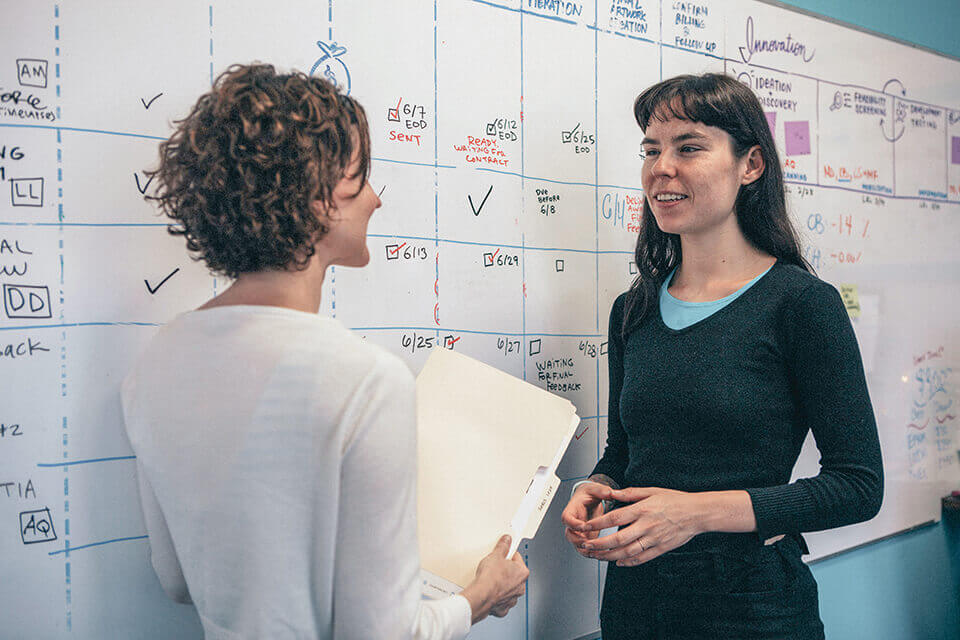
Often asking the right questions is tough, and will challenge a team, departmental, or even organizational assumption, but that’s good. New, innovative ideas never come from the same old thinking. By having an independent facilitator, these challenging and probing questions can come from someone technically outside the organization, while still being someone on the same team.
When your meeting is a virtual meeting, having a virtual graphic facilitator on hand to lead with specific questions also guarantees that crosstalk, blurred lines of authority, and confused communication don’t scuttle your meeting before you even launch.
A Good Facilitator is also an Empowered Arbiter of the Clock
As the clock goes, so goes the meeting. Too many teams let the clock spin round and round, which only assures that the discussion will do the same. But it can be hard for friends and colleagues to cut one another off, especially when there may be perceived (or actual) power dynamics at play.
Having a facilitator with an approved and agreed upon agenda means empowering someone neutral to manage the clock. This means that nobody’s feelings are hurt when the conversation moves on, and more importantly, that everyone can be focused on generating good ideas, rather than worrying over how long things are taking or when lunch is.
In a virtual meetings, this is even more critical to combat Zoom fatigue and to give participants opportunities to work on their own or in breakout sessions, use the bathroom, grab a snack, or just get up and shake the cobwebs loose.
An Empowered and Trusted Facilitator Can Encourage Participation
A major challenge of leadership is ensuring and encouraging a shared and even distribution of participant contributions. We know now that the loudest voices don’t always denote the best ideas, and that team members who can’t find the right window to contribute won’t. Not only is that bad for idea generation, but it hurts with team cohesiveness, and also discourages overall team buy-in and ownership (we’ll talk about the importance of that in an upcoming series on The ImageThink Method™).
Having a designated facilitator means that your whole team has an advocate, someone to assure the talkers that their points have been heard and registered, and to specifically call out the voices that are being drowned out to ensure that everyone has the chance to weigh in.
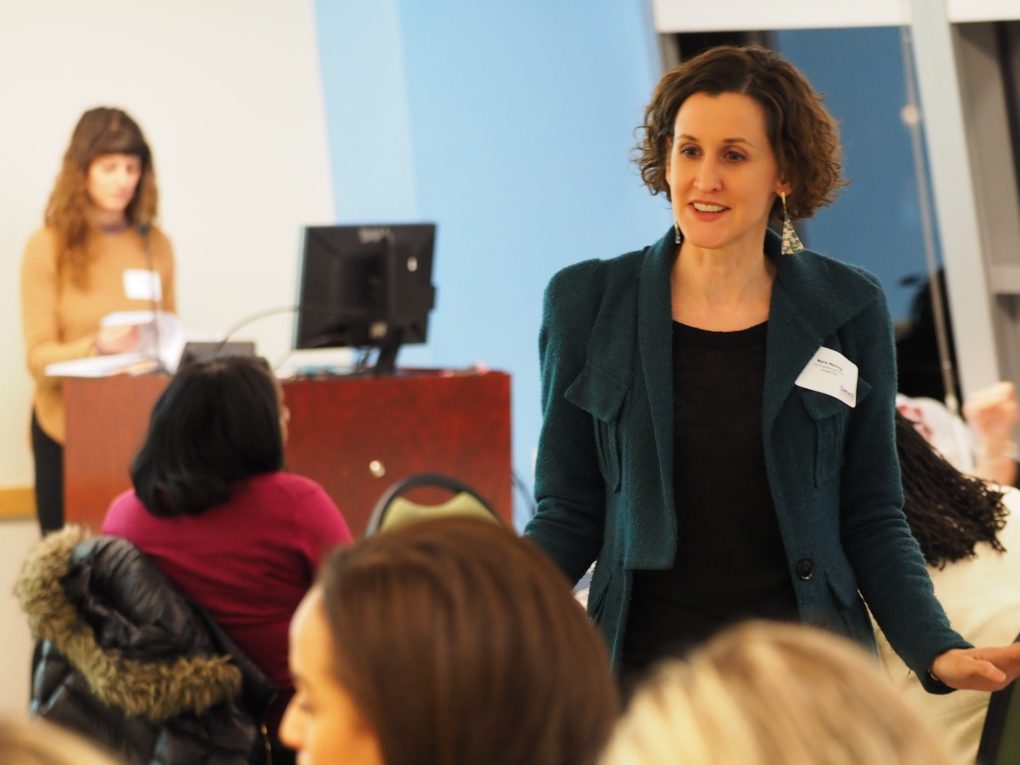
In virtual meetings, addressing attendees directly, and by name, is critical. It’s easier than ever in a remote meeting environment to zone out when you can’t get a word in edgewise, and to allow distractions like emails and deadlines to distract you from the task at hand. A virtual facilitator can keep everyone engaged and excited.
Facilitating Exercises in Creativity
Often, the types of meetings that we’re talking about are planned weeks or even months in advance. Many times, there are multi-day affairs, with modules and sessions and breakouts, and demand the immediate and sustained output of creative, original, non-linear ideas from those in attendance. But creative thinking isn’t a faucet that can simply be opened or closed. Think of it more as a prism that needs to be carefully positioned and aligned in order to reflect and refract back beauty. (How’s that for a metaphor?)
At ImageThink, we often talk about the power of visuals to inspire creativity. It’s one of the secret weapons we bring when facilitating meetings for our clients. As artists, illustrators, and graphic recorders, we’ve developed a host of activities that involve writing, drawing, and sharing that help attendees move into a creative headspace, both literally and figuratively. By getting people on their feet, or at the very least drawing and physically manifesting their thoughts, teams get their creative prisms positioned and ready themselves for whole-brain thinking.
As with each of the tips in this article, the value of a facilitator to lead creative exercises is further heightened in a virtual meeting environment, where individual attendees may not be in the most creative headspace or physical environment, and where it can be particularly difficult to channel the energy of the room to inspire creative thinking.
Facilitator as Arbitrator
There’s a difference between a virtual facilitator and a consultant, in that a facilitator isn’t generally positioned as the expert to help guide the decision making of a client; however that doesn’t mean a facilitator can’t be helpful when it comes to diffusing disagreements when the team is at loggerheads over what direction to take.
When we work with clients, we make sure to know who are the decision-makers in the room, and to have contingencies for resolving disagreements, or tabling decisions that may need cooler heads. A facilitator again can serve as an objective third-party to lower the temperature in the room before the entire session is derailed.
In virtual meetings there are some great tools at a facilitator’s disposable, such as Polls, anonymous surveys, and breakout rooms that can help ensure that everyone has an opportunity to comfortably weigh in during these moments, and it’s incredibly easy to set up a quick sidebar in a separate virtual meeting room for two parties to work out a compromise without wasting group time.
Facilitate, Assign, Activate!
We’ve all been in powerful, productive, creative sessions where everyone leaves feeling energized, empowered, and ready to kick off a new project. All too often, these feelings are allowed to evaporate thanks to a lack of clear next steps, action owners, and timelines.
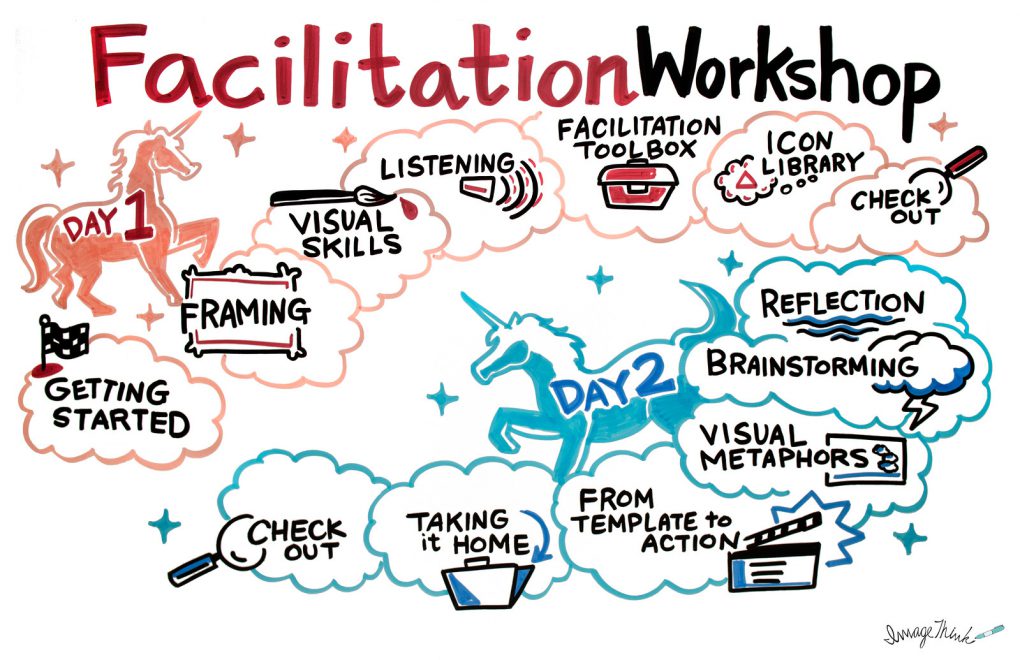
One of the most valuable and critical assets ImageThink brings to its clients when acting as a graphic facilitator is a clear, visual punch list that clearly itemizes what needs to happen to successfully move the project forward, and which also identifies who will be responsible for each item on the list. A powerful tool, this document can serve as a visual roadmap for the project, as well as a reminder of everyone’s commitment to and responsibility for the assignment.
As this is usually one of the last items on the agenda, it’s a great way to ensure that virtual participants, who may feel their energy flagging, might be tempted by the chime of the inbox, or may be up past their bedtime in another time zone, have a clear, final visual takeaway solidifying their role moving forward.
Facilitate Visually
You must have known this one was coming, dear reader. We are, after all, first and foremost a visual company. Whether it’s traditional graphic recording, pre-fabricated digital visual support, or an executive summary of a successful session, ImageThink always advises that our clients lock in all takeaways with visual notes.
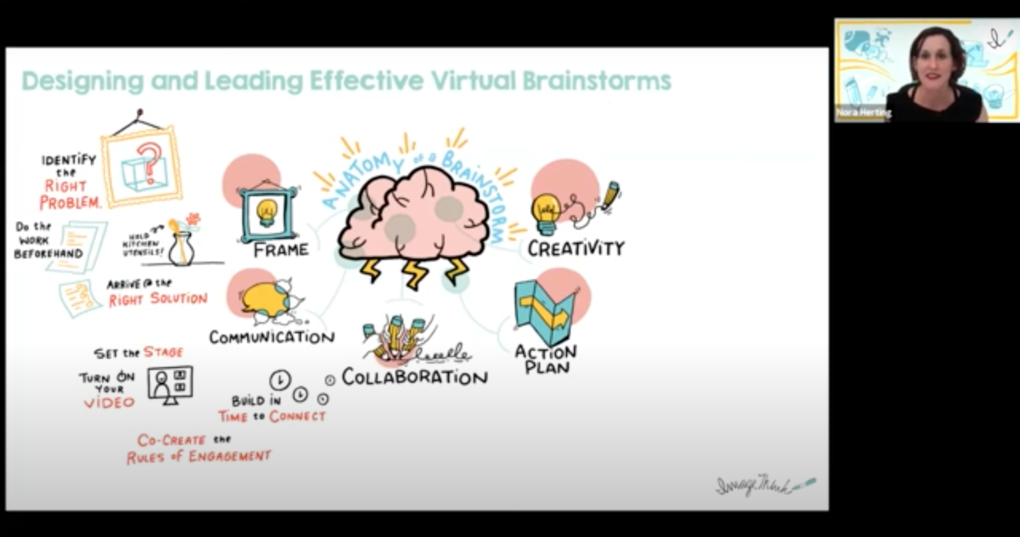
More than a beautiful representation of what was talked about, notes that are created visually, in real time alongside a robust discussion also trigger deeper sense memories for participants, and make recalling specific details easier over time. They also serve as a powerful tool for sharing the message and aligning an internal team, or exciting a future audience, more easily, as images can be read 60,000 times faster than text. (That’s not an extra three zeroes…60K times faster!)
Ready for your Q4 strategy session or 2021 strategic planning offsite? Need help optimizing your virtual meetings, which are here to stay? Use the chat function or reach out to us by clicking here for a discussion and demo of how ImageThink can help.
